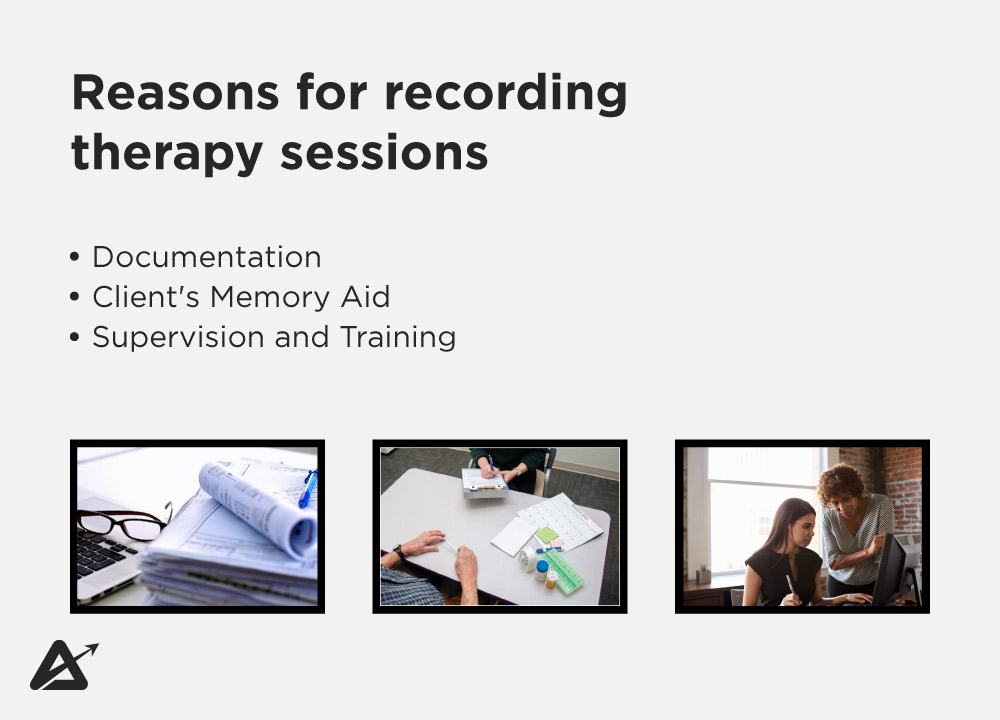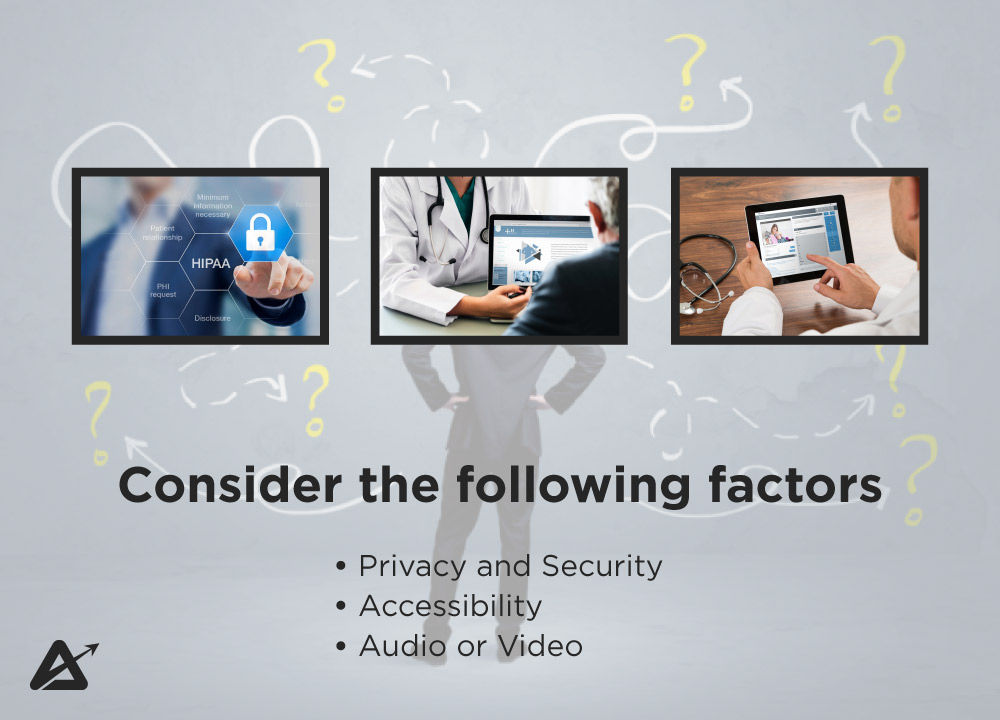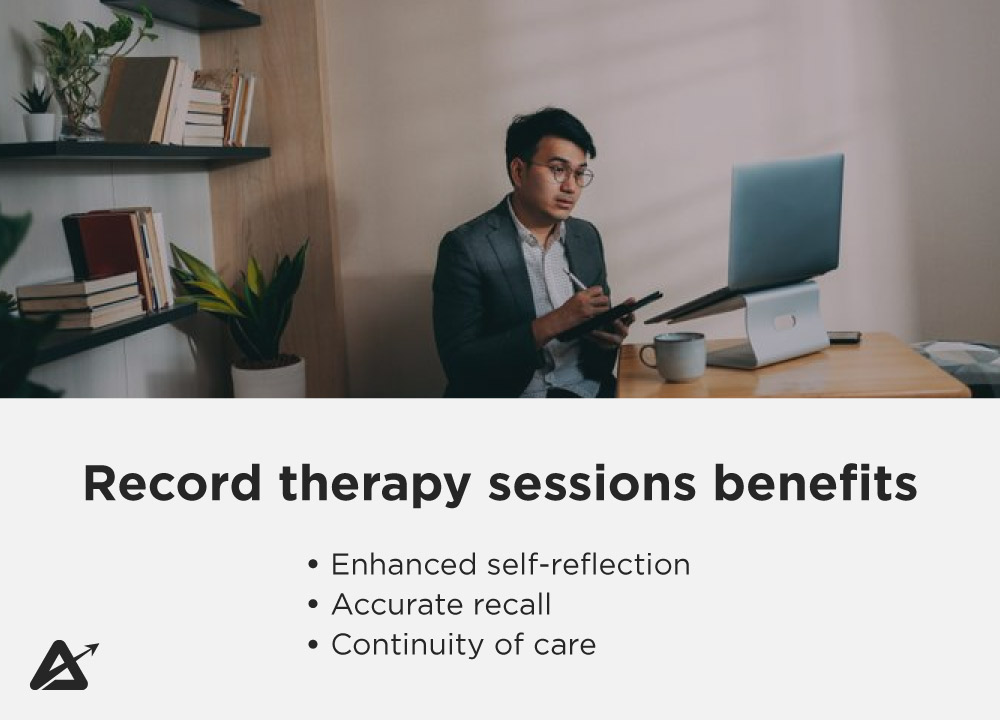Record therapy sessions have become a valuable tool in the field of mental health, enabling therapists and clients alike to review and reflect upon the content and progress made during sessions.
In this blog post, we will explore the benefits of recording therapy sessions and discuss the best methods for doing so effectively.
What are record therapy sessions?
Record therapy sessions, also known as recorded therapy or therapy recordings, refer to the practice of audio or video recording therapy sessions between a therapist and a client for therapeutic purposes. These sessions are conducted with the informed consent of both parties involved and are typically used for various therapeutic objectives. The recordings serve as a valuable tool for reviewing and analyzing the therapy process, enhancing self-awareness, promoting self-reflection, and facilitating more effective treatment outcomes. They allow therapists and clients to revisit and gain insights into the therapeutic content, dynamics, and interactions, enabling deeper exploration and understanding of the client’s concerns and progress. Record therapy sessions can offer a valuable resource for both clients and therapists to optimize the therapeutic experience and support personal growth.
Why Do We Need To Record Therapy Sessions?

- Documentation: Recording therapy sessions allow for accurate and detailed documentation of the content and progress made during each session. This can be useful for future reference, tracking changes over time, and reviewing specific insights or strategies discussed.
- Client’s Memory Aid: Therapy sessions often cover deep and emotionally charged topics. Recording sessions can serve as a memory aid for clients, helping them recall important points, insights, or homework assignments discussed during the session.
- Supervision and Training: Recording therapy sessions can be valuable for supervision and training purposes. Therapists can review recorded sessions with their supervisors or mentors to receive feedback, guidance, and support in improving their therapeutic skills.
- Ethical Considerations: Recording sessions can help ensure ethical practice in therapy. By recording sessions, therapists can adhere to professional guidelines, maintain transparency, and provide evidence if any concerns or disputes arise in the future.
- Research and Evaluation: Recorded therapy sessions can contribute to research and evaluation in the field of psychotherapy. Researchers can analyze session recordings to gain insights into effective therapeutic techniques, treatment outcomes, and the overall effectiveness of different approaches.
However, it’s important to note that recording therapy sessions should always be done with informed consent from the client, respecting their privacy and confidentiality.
In addition, blue light therapy has shown promise in managing the symptoms of rosacea by reducing inflammation and improving overall skin appearance. You may also want to know about Blue Light Therapy for Rosacea – An Ultimate Guide.
Here Is Some Of The Best Way To Record Therapy Sessions
Recording therapy sessions can be helpful for both therapists and clients, as it allows for a more accurate and detailed review of the session’s content. Here are some best practices for recording therapy sessions:
Obtain Informed Consent
Before recording any therapy session, it is crucial to obtain informed consent from the client. Explain the purpose of recording and how it will be used, ensuring that the client understands the benefits, risks, and rights regarding the recording.
Choose The Right Equipment
Invest in a high-quality recording device or software that captures clear audio without any disruptions or background noise. Test the equipment beforehand to ensure it works properly and is set to an appropriate volume level.
Ensure Confidentiality And Security
It’s essential to maintain the privacy and security of the recorded sessions. Store the recordings on encrypted and password-protected devices or servers, and limit access to authorized individuals only. Follow applicable legal and ethical guidelines for data storage and protection.
Position The Recording Device Strategically
Place the recording device where it can capture the audio effectively without being intrusive or distracting during the session. Consider using a discreet, non-obtrusive microphone or a digital recording system.
Inform Clients About The Recording
Start each session by reminding clients that the session is being recorded. This serves as a reminder to maintain confidentiality and helps clients become accustomed to the presence of the recording device.
Review And Assess Recordings Responsibly
Take the time to review and analyze the recorded sessions carefully. It can be beneficial to listen to the sessions in their entirety or specific segments that are relevant to the therapeutic goals. Consider taking notes or jotting down timestamps for easier reference later.
Respect Confidentiality And Privacy
As a therapist, you have a legal and ethical obligation to maintain client confidentiality. Ensure that the recordings are securely stored and not shared with anyone without the client’s explicit consent, except where required by law or ethical guidelines.
Discuss Recording With The Client
Periodically check in with clients to discuss their comfort level with the recording process. Clients may have concerns or questions, so create an open and safe space for them to voice any feedback or adjustments they would like.
Remember, the decision to record therapy sessions should always be made collaboratively, considering the client’s needs and preferences.
When Choosing The Best Way To Record Therapy Sessions, Consider The Following Factors:

- Privacy and Security: Prioritize methods that ensure the confidentiality and security of client information. Look for solutions that offer encryption and comply with relevant privacy regulations.
- Accessibility: Opt for recording methods that are easily accessible for both the therapist and the client. This could include digital platforms, software, or apps that can be accessed from various devices.
- Audio or Video: Decide whether you want to record audio-only or include video as well. Video recordings can capture non-verbal cues and facial expressions, providing a more comprehensive record of the session.
- Quality: Ensure the chosen method provides good audio or video quality for accurate playback. Clear recordings are essential for the effective analysis and review of therapy sessions.
- Consent and Legal Considerations: Obtain informed consent from clients before recording any sessions. Familiarize yourself with the legal requirements and regulations related to recording therapy sessions in your jurisdiction.
- Storage and Backup: Select a method that offers secure storage and backup options. It’s crucial to safeguard recordings in case of any data loss or technical issues.
- Ease of Use: Choose a recording method that is user-friendly and doesn’t interfere with the therapeutic process. Complicated or cumbersome setups may distract participants and disrupt the session.
- Compatibility with Therapy Approach: Consider whether the recording method aligns with the therapeutic approach being used. Some methods may be more suitable for specific types of therapy, such as cognitive-behavioral therapy or art therapy.
- Cost: Evaluate the cost implications of different recording options. There may be free or low-cost solutions available, as well as more advanced options that require a financial investment.
- Professional Guidelines: Consult relevant professional associations or licensing boards for any guidelines or recommendations regarding recording therapy sessions.
What Are The Client’s Needs For Recording Therapy Sessions?
- Confidentiality and privacy
- High-quality audio recording
- Ease of use and user-friendly interface
- Compatibility with various devices (computers, smartphones, tablets)
- Secure storage and backup options
- Ability to annotate or add notes during the session
- Customizable settings for recording preferences (e.g., audio quality, file formats)
- Searchable and organized session archives
- Option to share recordings securely with authorized individuals (e.g., supervisors, colleagues)
- Integration with other therapy management software or platforms (if applicable)
- Reliable technical support and regular software updates
- Compliance with ethical and legal requirements (e.g., HIPAA regulations)
- Cost-effectiveness and affordability.
When Is The Time For Recording Therapy Sessions?
The timing of recording therapy sessions can vary depending on the preferences and policies of the therapist or counseling center, as well as any legal or ethical considerations. Here are a few common approaches:
Informed consent: Before recording any therapy sessions, therapists typically obtain informed consent from their clients. This consent includes discussing the purpose of the recording, the potential benefits, and any limitations or risks associated with recording sessions.
Prescheduled recordings: Some therapists may schedule specific sessions for recording purposes. This allows both the therapist and client to prepare for the recording and ensures that the client feels comfortable being recorded during those particular sessions.
Random selection: In certain cases, therapists may randomly select sessions for recording. This method helps capture a broader representation of the therapy process and can prevent potential biases in recorded sessions.
Session-by-session agreement: Therapists and clients may agree on a session-by-session basis on whether a particular session will be recorded. This approach provides flexibility and allows clients to decide which sessions they feel most comfortable recording.
It’s important to note that therapy sessions are highly confidential, and the recording process should adhere to legal and ethical guidelines, including privacy laws and maintaining the confidentiality of client information. Additionally, therapists should inform clients about the storage, security, and potential uses of the recorded sessions to ensure transparency and trust within the therapeutic relationship.
There are also good LED light therapies for rosacea that you can use to take care of your skin. Read the Is Light Therapy Good for Rosacea blog to find out if LED light therapy is really good for your skin.
Record therapy sessions can provide several benefits, including:

- Enhanced self-reflection: Recording therapy sessions allows individuals to revisit the conversation and gain deeper insights into their thoughts, emotions, and behaviors. It enables them to reflect on their progress, patterns, and areas of improvement.
- Accurate recall: Memory can be fallible, and important details or breakthrough moments in therapy may be forgotten over time. Recording sessions ensures an accurate recall of the therapist’s guidance, suggestions, and strategies, enabling clients to reinforce their learning.
- Continuity of care: In situations where therapy sessions occur irregularly or there are gaps between appointments, recorded sessions serve as a bridge, providing continuity of care. Clients can review past sessions and maintain a sense of progress and therapeutic continuity.
- Increased engagement: Knowing that sessions are being recorded can enhance client engagement and active participation during therapy. It encourages individuals to reflect on their responses, ask clarifying questions, and contribute more meaningfully to the therapeutic process.
- Collaborative decision-making: Recorded sessions enable clients to involve trusted individuals, such as family members or partners, in their therapy journey. By sharing recordings, clients can seek additional perspectives and collaborate on decision-making related to their mental health and well-being.
- Personal growth and awareness: Regularly listening to recorded sessions allows clients to track their personal growth and development over time. It promotes self-awareness, identification of recurring patterns, and a deeper understanding of oneself, leading to lasting positive change.
Note: It’s important to obtain informed consent from both the client and therapist before recording any therapy sessions. Confidentiality and privacy should be maintained, and it’s advisable to discuss the purpose and usage of the recordings with the therapist beforehand.
Disadvantages of recording therapy sessions

Breach of confidentiality
Recording therapy sessions can potentially compromise the confidentiality and privacy of clients. If the recordings are not securely stored or handled, they may be vulnerable to unauthorized access or accidental disclosure, leading to breaches of confidentiality.
Ethical Concerns
Therapists have a responsibility to maintain the highest ethical standards in their practice. Recording sessions may raise ethical dilemmas regarding consent, client autonomy, and the potential for misuse of recorded material. It is crucial for therapists to carefully navigate these ethical considerations.
Inhibition Of Open Communication
The presence of a recording device can create a sense of self-consciousness and hinder open and honest communication between the therapist and the client. Clients may be reluctant to express their thoughts and feelings freely if they are aware that their words are being recorded, potentially impacting the effectiveness of therapy.
Impact On Therapeutic Alliance
The recording process may affect the therapeutic alliance between the therapist and the client. Clients may perceive the act of recording as intrusive or may feel uncomfortable knowing that their sessions are being preserved. This can undermine the trust and rapport essential for effective therapy.
Legal And Regulatory Complexities
Recording therapy sessions can introduce legal and regulatory complexities. Laws and regulations surrounding the recording and storage of sensitive information vary across jurisdictions. Therapists must navigate these complexities carefully to ensure compliance and protect their clients’ rights.
Technical Limitations And Failures
Recording sessions require appropriate technical equipment and expertise. Technical failures, such as malfunctioning equipment or inadequate audio quality, may result in incomplete or unusable recordings. Reliance on technology introduces the possibility of errors and technical difficulties, impacting the quality and utility of recorded sessions.
Misinterpretation And Misrepresentation
Recording therapy sessions can potentially compromise the confidentiality and privacy of clients. If the recordings are not securely stored or handled, they may be vulnerable to unauthorized access or accidental disclosure, leading to breaches of confidentiality.
POTENTIAL FOR OVER-RELIANCE ON RECORDINGS
Therapists may become overly reliant on recorded sessions, potentially diminishing their ability to actively engage with clients during live sessions. Over-reliance on recordings may also limit therapists’ flexibility and adaptability to the client’s changing needs and the dynamic nature of therapy.
It is important to note that the decision to record therapy sessions should be made with careful consideration of ethical guidelines, legal requirements, and the specific needs and preferences of the client.
Conclusion
Recording therapy sessions can be a powerful tool for both therapists and clients. However, it is essential to approach this practice ethically and responsibly. Seek informed consent, choose the right recording technology, protect client confidentiality, establish clear boundaries, and regularly review and reflect on the recorded sessions. By following these best practices, you can leverage the benefits of recording therapy sessions to enhance the therapeutic process and promote personal growth.






